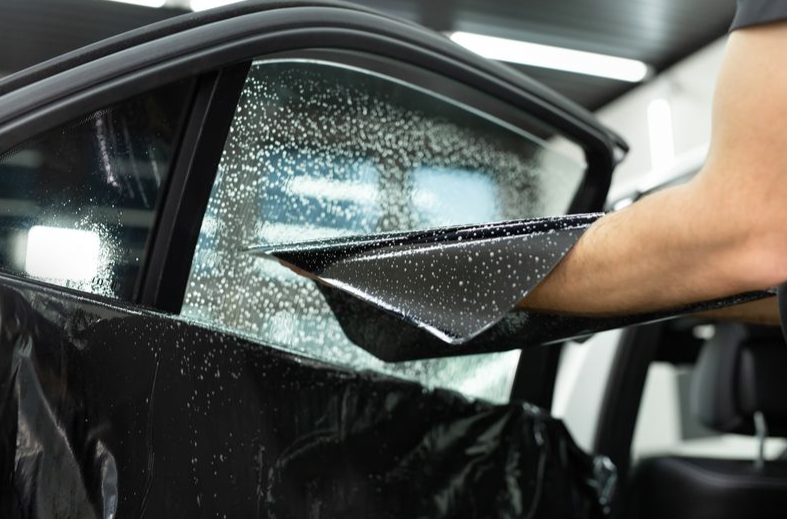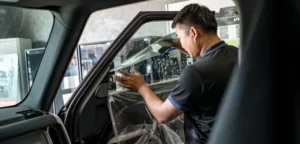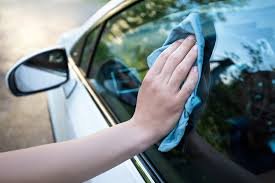If you’ve ever had your car or home windows tinted, you know the instant benefits—cooler interiors, increased privacy, UV protection, and a sleek aesthetic. But how long will those benefits actually last? The answer depends on several key factors, the most important being the type of window tint film used.
In this guide, we’ll dive into the lifespan of different window tint types, explore the variables that affect durability, and help you understand how to maximize your tint’s longevity—so you get the most value out of your investment.
What Impacts the Lifespan of Window Tint?
The durability of window tint depends on a combination of film quality, environmental conditions, installation methods, and maintenance. Poor-quality films may begin to fade, bubble, or peel within a year or two, while premium films can last over a decade with minimal degradation.
Environmental exposure plays a significant role as well. Tint exposed to intense sun, heat, and humidity—as is common in places like San Diego or El Cajon—will naturally degrade faster than tint in milder climates. Likewise, how the film was installed (professional vs. DIY) and how well it’s maintained (e.g., cleaning techniques) also affect its lifespan.
Dyed Window Tint: Affordable but Shorter Lifespan
Dyed window tint is often the entry-level choice for vehicle or residential tinting. It uses a dye layer embedded in the adhesive or polyester film to block light and reduce glare. While affordable and effective for privacy, dyed tint has the shortest lifespan of all film types—typically 3 to 5 years.
This type of tint is more susceptible to fading, discoloration, and delamination, especially when exposed to intense sunlight or poor cleaning habits. Over time, it may develop a purple hue and lose its effectiveness.
Best For: Budget-conscious car owners, short-term use
Durability: 3–5 years (with proper care)
Metalized Window Tint: More Durable but Can Interfere with Electronics
Metalized tint is built using microscopic metallic particles that reflect solar heat and reduce UV exposure. It’s significantly more durable than dyed tint and less likely to fade over time. With proper care, metalized films can last 5 to 8 years.
However, metal-based films can interfere with radio, GPS, and mobile phone signals, making them less ideal for modern vehicles or smart homes with signal-reliant systems.
Best For: Drivers who prioritize heat reduction and durability (but don’t rely on in-glass antennas or smart tech)
Durability: 5–8 years
Carbon Window Tint: Excellent Performance and Longevity
Carbon tint is a non-metallic film that contains carbon particles designed to block infrared heat and UV rays without interfering with electronics. It provides a dark matte finish, excellent heat rejection, and fade-resistant color stability.
Carbon films are known for their impressive lifespan of 7 to 10 years or more, especially when installed professionally and maintained correctly. Because it doesn’t fade like dyed tint and doesn’t disrupt signal strength like metalized tint, carbon tint is considered a balanced and modern choice for both automotive and architectural applications.
Best For: Long-term car owners, modern homes, and drivers looking for high performance without signal issues
Durability: 7–10+ years
Ceramic Window Tint: The Premium Long-Lasting Solution
Ceramic tint represents the pinnacle of window film technology. Made from nano-ceramic particles, this non-metallic, non-dyed film blocks up to 99% of UV rays and 98% of infrared heat, offering unmatched clarity, glare reduction, and temperature control.
More importantly, ceramic films have a lifespan of 10 years or more, often backed by extended warranties from manufacturers. They don’t fade, interfere with electronics, or degrade under extreme weather. This makes ceramic tint the top choice for luxury vehicles, commercial fleets, and high-end homes.
Best For: Those who want the best in heat rejection, durability, and performance
Durability: 10+ years (with warranty support
How to Extend the Life of Your Window Tint
Even the best tint films can degrade prematurely if not properly cared for. Here are key practices that help maintain performance and appearance:
- Wait before cleaning: Avoid cleaning your windows for at least 3–5 days after installation to let the film cure.
- Use the right cleaner: Avoid ammonia-based glass cleaners, which can break down the film. Opt for tint-safe or vinegar-based solutions with a soft microfiber cloth.
- Park in the shade: Whenever possible, reduce prolonged sun exposure by using a garage or shaded parking space.
- Avoid abrasive tools: Scrapers and rough cloths can scratch the film and reduce its clarity and integrity.
- Schedule professional inspections: Especially for fleet or commercial vehicles, routine inspections can catch bubbling or peeling before it worsens.
Signs Your Tint Needs Replacement
Even with the best care, no window film lasts forever. Watch for these signs that it may be time to consider a tint replacement:
- Discoloration or purple tinting
- Fading or patchy areas
- Peeling along the edges or corners
- Bubbling or wrinkling
- Loss of UV or heat-blocking efficiency
Replacing old or degraded tint not only restores your car or home’s appearance but also ensures continued protection from the sun’s damaging effects.
Conclusion: Choosing the Right Window Tint for Long-Term Value
Window tinting is a valuable investment for anyone looking to protect their vehicle or home from heat, UV damage, and glare. But not all tint films are created equal when it comes to durability. While dyed tint may be budget-friendly, its shorter lifespan makes it ideal for temporary use. In contrast, ceramic and carbon tints provide long-lasting protection and performance, making them ideal for long-term vehicle ownership or premium residential applications.
By understanding the lifespan of different film types and practicing proper maintenance, you can make an informed decision that delivers years of comfort, privacy, and style.
For professional advice and long-lasting tint installation in San Diego, El Cajon, or surrounding areas, contact a certified local tinting specialist today.






